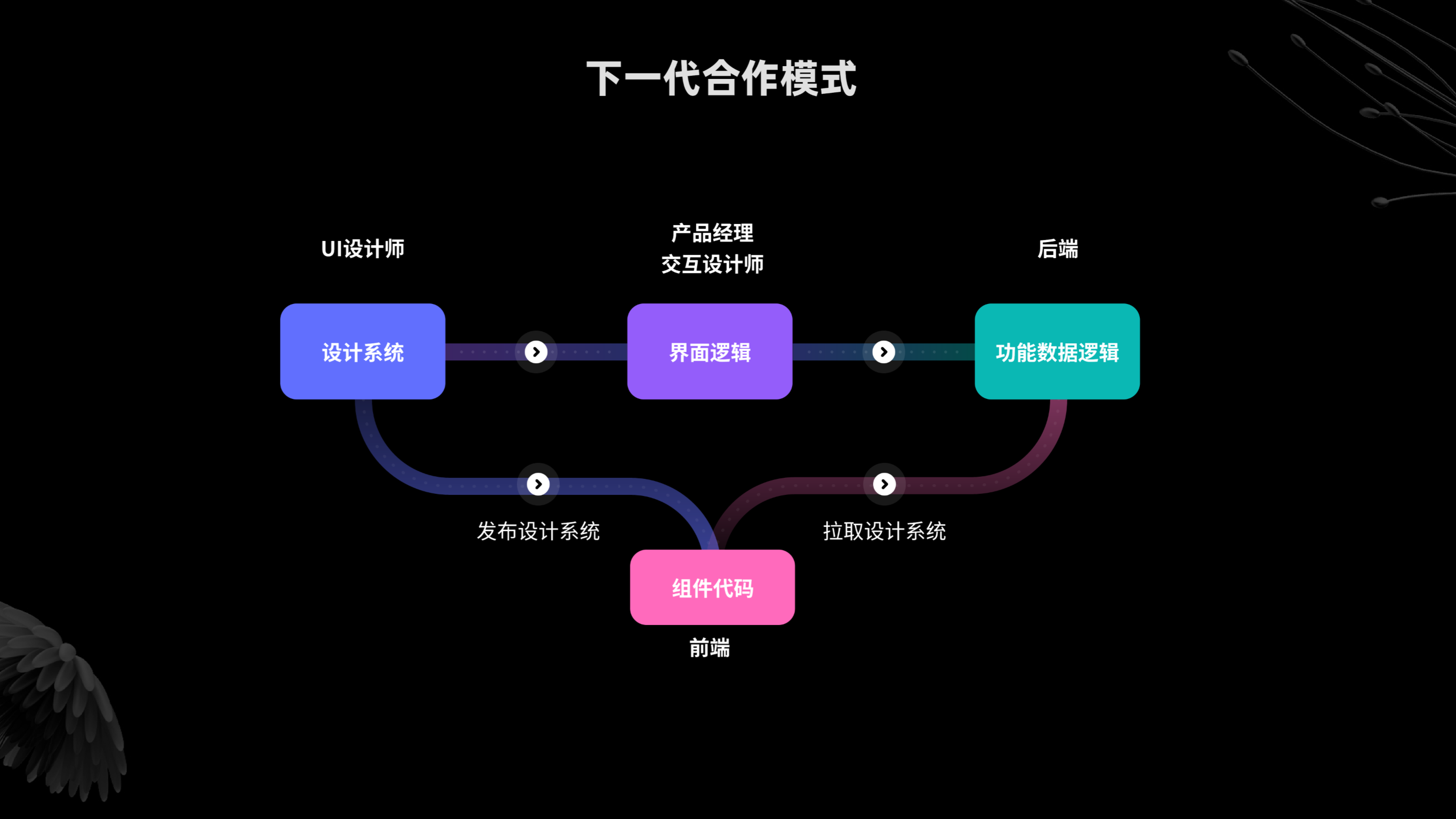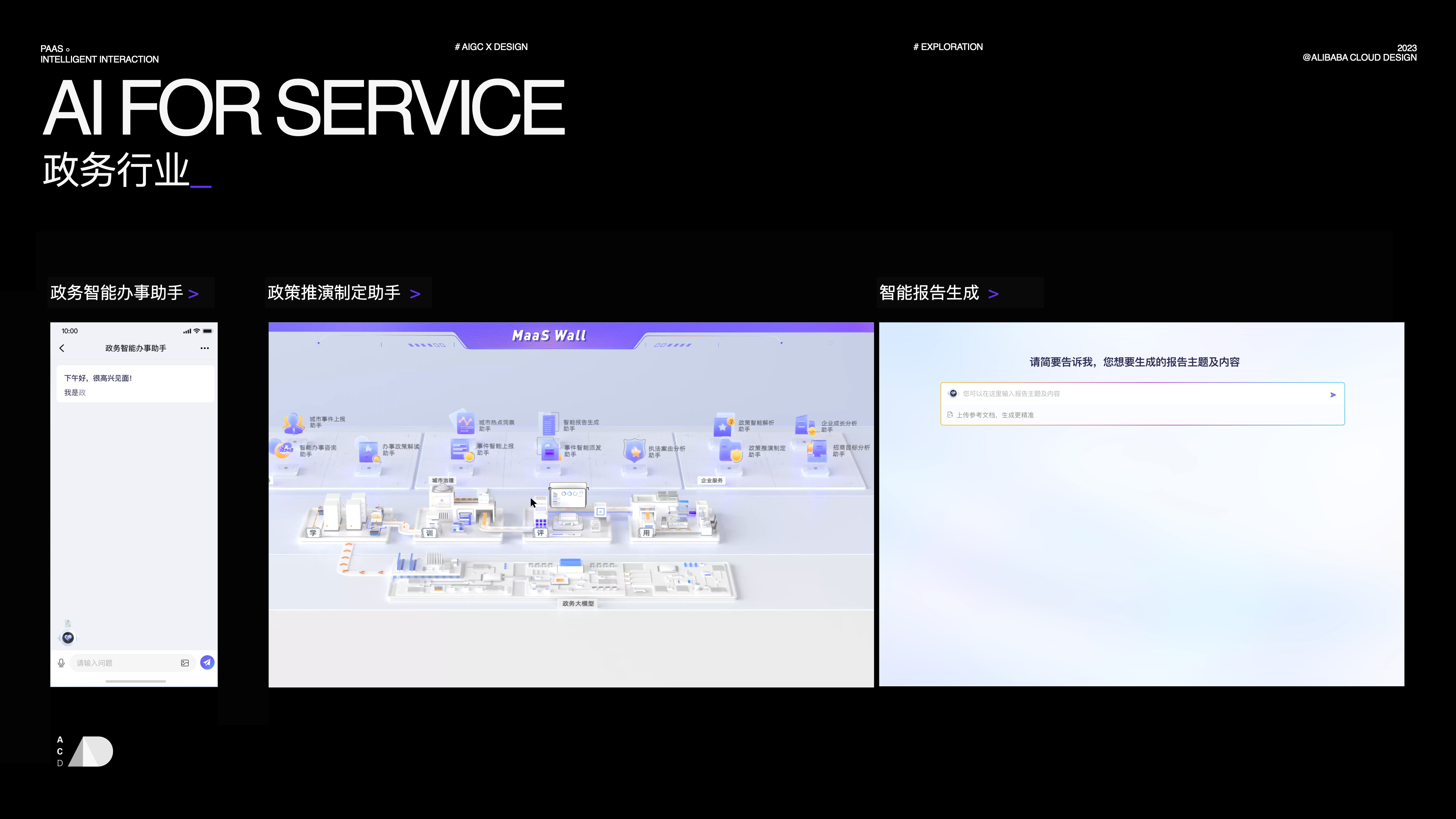 人工智能峰会
人工智能峰会
-
 董腾飞
百度移动生态事业群
产品设计师
董腾飞
百度移动生态事业群
产品设计师
拥有14年设计经验。当前就职于百度,负责内容生态用户体验设计,统筹内容生态策略产品、人工智能创新产品、内容生态运营等设计工作,与组织一起创造极致用户体验的同时赋能商业。曾就职快手,负责协同办公、云、基础技术等设计部门;曾负责百度浏览器、地图、研究院等设计以及RDRN等。近期兴趣在AGI与AIGC技术的实用化。
设计理念:「简单极致」。创造极致用户体验的同时赋能商业,推动设计价值和影响力,让生活因设计而更美好。
-
 程俊楠
博思云创 Pixso
产研负责人
程俊楠
博思云创 Pixso
产研负责人
Pixso产品设计&研发中心负责人,博思云创科技有限公司创始团队成员,曾就职于亿图软件,参与研发多款千万月活跃用户的产品。从0到1成功完成Pixso的研发和商业化,确立其市场领导地位,对设计工具的发展及AI时代的趋势有深刻洞察和理解。
设计理念:创造好的设计工具,帮用户把产品设计得更美好。
-
 张昊然
Motiff 妙多
副总裁
张昊然
Motiff 妙多
副总裁
负责 AI 时代设计工具 Motiff 妙多的全球化运营工作。Motiff 妙多定位 Figma 下一代设计工具,搭载团队自研的 Motiff 妙多大模型,已推出 AI 设计系统、AI 工具箱、AI 生成 UI 等原生 AI 功能。发布仅数月时间,Motiff 妙多已获得全球用户广泛使用和好评。
设计理念:第一性、简宜、累进。
-
 王婉
阿里云
政企设计负责人
王婉
阿里云
政企设计负责人
阿里云体验设计高级专家,阿里15年体验设计与管理经历,现任数据智能 & 数字行业(Data & Intelligence)团队负责人,主导工业、交通、航空、医疗等行业智能综合解决方案0-1建设,擅长利用复合的设计手段与设计思考力解决问题,在可视化、计算设计、PaaS、SaaS等设计方向上有多年的实战经验。曾任UXPA、UCAN讲师。
设计理念:让设计成为城市数化的翻译官。
-
 刘彦良
微软 Studio 8
首席设计经理
刘彦良
微软 Studio 8
首席设计经理
微軟 Teams 首席设计经理,致力于通过 AI 让会议更高效、更智能。毕业于英属哥伦比亚大学,在电商、搜索、信息安全、教育、公益、生产力工具等行业有超过20年的体验设计和管理经验。
-

任婕 腾讯 设计总监
腾讯AIDesignOteam负责人,负责腾讯混元大模型产品设计,负责AIGC产品设计、AIGC数据训练、智能体项目。腾讯设计委员会委员。
拥有丰富的产品设计经验和用户体验设计团队管理经验,是业界资深的互联网产品体验设计专家。IXDC专家委员,IIDC中国工业设计协会委员。
AI构筑智慧新生态
在经历了一年的科技飞跃和全球性挑战之后,2024年人工智能峰会将聚焦于AI技术如何引领全球经济复苏,聚焦于AI作为推动各行各业变革的中心力量,探索它如何激发新的创意、产品和服务,同时形塑我们未来的生活和工作方式。
本场峰会将邀请全球范围内的优秀企业和案例代表,分享他们在人工智能浪潮中的成功经验和教训,以及他们对未来AI发展趋势的独到见解。峰会将提供一个深入探讨AI如何领航构筑智慧生态,共创未来经济的绝佳平台。为参与者提供宝贵的知识和灵感,共同迎接AI带来的美好未来。
-
演讲一:董腾飞《董腾飞《《多模态模型的设计工艺实用化与AIGC规模实践》》》
主讲人:董腾飞 ( 百度移动生态事业群,产品设计师)
在百度内容产品体验设计实践中,以 "人机共生" 为哲学基底,构建起多模态 AI 技术重构内容生产范式与拓展人类创造力边界的探索框架,将具体从以下维度展开系统性实践分享:
1、技术驱动:从工具赋能到认知共生的范式跃迁
通过“技术实用主义+设计伦理”双轴驱动,推动AIGC从效率工具升维为文明进化载体。AGI技术模糊人类与机器的创作权责边界,引发“创造力归属”的思辨。
2、创作范式重构:流程再造与超级个体孵化
创作流程重构,超级个体孵化。
3、商业与文化共振:用户身份进化与产业升维
UGC普惠激发用户从“观看者”到“共创者”的身份转变,PGC升维AIGC驱动的视频生产重构。
4、思辨与伦理:创造力归属与共生进化
共生进化,为AI时代的创作体验创新提供元思考框架。
演讲将帮助参会者了解人工智能最前沿的发展成果,理解AIGC的实际影响与应用过程,并学习一种新的看待技术革新生产力的思维模式。
作品/案例-
 董腾飞 - 度加AIGC创作工具
董腾飞 - 度加AIGC创作工具
-
 董腾飞 - 概念视频2025-度加品牌视觉
董腾飞 - 概念视频2025-度加品牌视觉
-
 董腾飞 - 概念视频2025-CSDEA
董腾飞 - 概念视频2025-CSDEA
-
 董腾飞 - AIGC播报数字人
董腾飞 - AIGC播报数字人
-
 董腾飞 - 百度APP-AI发布器2025
董腾飞 - 百度APP-AI发布器2025
-
-
演讲二:《AI时代的产品与设计》
主讲人:程俊楠 ( 博思云创 Pixso,产研负责人)
在新的数字时代,设计趋势和用户需求正在发生深刻的变化。产品和服务的生产方式、用户的交互习惯以及团队的协作模式均发生了巨大的改变。这也就意味着,我们的设计工具和方法需要同步更新以满足这些改变。
通过观察和分析行业整体趋势,我们将抛出设计工具发展滞后的问题,从而总结出产品设计和体验设计的变化思路。本次分享更将进一步深入探讨AI大模型和AI工具的这些转变,以及它们对当今设计领域带来的影响和挑战。
本次演讲内容包括:
1、新时代中设计趋势洞察
1.1 用户需求和产品形态变了
1.2 设计工具的发展滞后
2、AI大模型给体验设计带来的变化
2.1 变化1:figma正在发生哪些变化
2.2 变化2:其他体验设计产品的变化思路
2.3 体验设计工具的普遍思路总结
2.4 Pixso 2.0 到 3.0的迭代变革
3、AI技术在设计领域中的局限与展望
3.1 大模型局限:9.11 跟9.9的比较
3.2 AI的推理能力的举例
3.3 AGI的预期和设计工具的变化
4、博思AI办公一体化实践与案例
作品/案例-
 下一代合作模式
下一代合作模式
-
 实现企业设计统一性
实现企业设计统一性
-
 产品落地全流程
产品落地全流程
-
 设计工具的演进
设计工具的演进
-
-
演讲三:《Motiff 妙多大模型:Al 时代设计工具的底座》
主讲人:张昊然 ( Motiff 妙多,副总裁)
今年 6 月,在 Figma 的 Config 大会会场,一款新的设计工具 Motiff 横空出世,以独创的 AI 功能挑战行业领头羊 Figma。
Motiff 妙多在 2023 年 7 月在 IXDC 大会首次亮相,又于 2024 年 6 月在新加坡 Super AI 大会全球正式发布。一年过去,这款 AI 时代设计工具又带来了诸多创新的 AI 功能 —— AI 复制、AI 布局、AI 设计系统、AI 生成 UI …… 哪些因素在驱动 Motiff 妙多不断进行产品创新?
此次演讲,将向你分享:
- 我们如何理解 AI 与设计工具的关系,AI 未来将如何推动设计工具演进。
- Motiff 妙多诸多 AI 创新功能背后的思考和故事。
- AI 生成 UI,当下的进展和未来展望。
同时,我们还将向你介绍 「Motiff 妙多大模型」。作为驱动创新和前沿 AI 功能的底座,这款专业领域的 UI 行业大模型,相比通用大模型具备哪些与众不同的专有能力,以及如何驱动 AI 时代设计工具不断发展。
作品/案例-
 卓越基础性能:100 万图层流畅编辑
卓越基础性能:100 万图层流畅编辑
-
 AI 生成 UI:演进之路
AI 生成 UI:演进之路
-
 AI 设计系统:全面提升设计系统的实践
AI 设计系统:全面提升设计系统的实践
-
 AI 复制:AI 快速填充和替换文本和图片
AI 复制:AI 快速填充和替换文本和图片
-
 设计工具时代变迁
设计工具时代变迁
-
 Motiff 妙多:AI 时代设计工具
Motiff 妙多:AI 时代设计工具
-
-
演讲四:《未来已来—智能浪潮下设计的自我迭代》
主讲人:王婉 ( 阿里云,政企设计负责人)
在智能浪潮中,我们见证了AI设计技术的迅猛发展。AI设计工具正在提升设计效率,激发创意灵感,为设计师提供了前所未有的支持,AI已成为设计师不可或缺的助手。
在我们的业务中,升级的设计智能化的工作流已经渗透到了设计工作的多方面。在此次峰会上,我将和大家交流AI设计发展的现状、对设计行业的影响,以及如何在自己的场域下应对浪潮。内容主要包含:
1、AIGC新范式
1.1、从数字资产到<模型>资产
1.2、从自动化工具到<生成式工具>
1.3、从人机协作到<人智协作>
2、重新定义设计师的核心竞争力
2.1、AIGC X 创意营销:围绕创意策划的技能延展;
2.2、AI X 行业项目:打破认知隔阂,创造沟通契机;
2.3、AI X 商机拓展:设计解决方案架构师的诞生;
3、顺应时代的生产关系
3.1、设计人的自我修养;
3.2、设计更“正确”的设计职业环境;
3.3、NOT DESIGN JUST FUTURE;
希望通过这些实战故事与心得,与大家一起描绘设计行业未来的全新景象。
作品/案例-
 政务实战
政务实战
-
 交通实战
交通实战
-
 能耗实战
能耗实战
-
 AIGC新范式
AIGC新范式
-
-
演讲五:《生成式 AI 在生产力工具的应用和设计思考》
主讲人:刘彦良 ( 微软 Studio 8,首席设计经理)
随着人工智能技术的日益成熟,各式各样的AI产品层出不穷,产品设计在AI的赛道上经历了无数的试错和转变,并且现在仍在持续变化与发展中。人工智能即将改变人的生活和工作,但具体会发生什么呢?本次演讲将以微软的生产力工具为例,分享当前 AI 能力落地的场景,和我们工作的新方法、新思路。
演讲内容将包括:
1、微软产品中 AI 使用的案例和趋势
2、设计师的工作出现了什么变化
作品/案例-
 沉浸式的
沉浸式的
-
 搜索体验
搜索体验
-
 对话式 UX:Copilot
对话式 UX:Copilot
-
 智能化
智能化
-
1、AI技术研发人员、产品经理、UI/UX设计师等专业技术人员
2、各行各业寻求数字化转型的企业决策者和业务发展人员
3、政府官员、公共政策制定者、行业协会代表
4、对AI技术应用及其社会影响感兴趣的学者、研究人员
1、了解最前沿的AI技术进展和行业应用趋势
2、增强设计师在AI时代的竞争力和创新能力
3、理解AI对于未来工作、生活方式的深远影响
4、建立业内外的联系网络,寻找合作伙伴和投资机会






